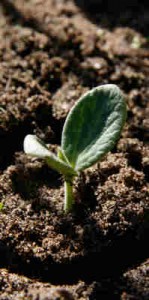 Predicting frost is a difficult thing. Cold air is heavier than warm air, so it settles into low lying areas. Within a neighborhood or even a single property, some areas may be frosted, and others untouched. Areas under trees and near the house gain a few degrees “extra” protection.
Predicting frost is a difficult thing. Cold air is heavier than warm air, so it settles into low lying areas. Within a neighborhood or even a single property, some areas may be frosted, and others untouched. Areas under trees and near the house gain a few degrees “extra” protection.
There are places in Massachusetts that are in a “frost pocket” and seem to get every frost possible. They’ll sometimes get a frost three weeks later than even a mile away. So trying to predict frost for an area ranging from the cold pockets of Barre, for instance, to the relative warmth of Worcester is very difficult. Experience will teach you where you fall within this frost continuum. Keep your ear on the weather forecast on chilly clear spring days. We suggest www.weather.gov for a non-sensationalized weather forecast. Just type in your zip in the upper left box. It will also give frost and freeze warnings and advisories.
We get accused of being overly conservative in terms of warning people not to plant their tender plants outside too early in the spring. We look at it as being seasoned. We have seen lots and lots of late spring frosts here on the farm. Tina froze her tomatoes on June 6 one year. While June 6th is not typical, May 31 is not unusual at all for having a frost.
Putting the tender plants outside too early will often not give a benefit even if there is not a frost because the soil is just not warm enough. We get very frustrated when we see other plant sellers taking advantage of folks and selling tomatoes and impatiens in April. That is certain plant death. Experienced gardeners have learned that one of the keys to gardening success is patience. Please believe us. If we simply wanted your money we would try to sell the plants to you early, then sell you a second batch once the first ones died. But we don’t, we want you to be successful gardeners!
Tender vegetables such as tomatoes, peppers, the “creepy-crawlies” (squash, pumpkins, etc.) and others may be frost damaged. The same hold true of annuals such as impatiens, begonias, marigolds, etc. Most perennials are relatively untouched by a light frost. One notable exception is hosta, which can sustain leaf damage, but it will only harm the appearance. If we get a hard frost, or a freeze other plants will need to be protected to keep them undamaged until warmer weather.